- GREECE: Day 1-Day 5, Athens-Patras, 216,9km, 35:19 hours
The first part of Agis Emmanouil’s adventure from Athens to Glasgow has come to an end. Agis started in Athens on August 11th and arrived in Patras on the 15th. See my previous post for a description of this unique endeavour and the reasons for it. Agis run a total of 216,9KM on Greek soil in 35 hours and 19 minutes.
- Read Part 2 about the Air Quality that Agis found in Italy.
- Read also the summary with the Air Quality insights of the whole 2421KM Climate Run, which encompasses all countries, here.
I will follow Agis’ 2421 km Athens-Glasgow Climate Run (see the daily stretches here) in a quite singular way, which is by trying to interpret the Air Quality (AQ) he will be running through thanks to the portable Plume Flow AQ Monitor that I gave him to wear on his backpack.
Of all the air pollutants, we will consider the Particulate Matter PM2,5 and Nitrogen Dioxide NO2, which are especially dangerous to our health.
But why monitoring the Air Quality along Agis’ journey?
Because Agis is going to be running through some of the most polluted areas of Europe! These are the Athens metropolitan area and Greek cities in general, the Padania plain all the way from Venice to Turin, both of which have especially high levels of both PM2,5 and NO2, and France and the UK which have lower levels of PM2,5 but have very high NO2 levels. Furthermore, the recent wildfires in Greece have released huge amounts of smoke that was still in the air over Attica and the Peloponnese at the time when Agis began his run towards Patras.

Air Pollution is known to reduce life expectancy by up to three years. It does so by causing oxidative stress, inflammation and the death of cells of various organs of the body, leading then to various serious illnesses. Exercising under high levels of Air Pollution can be especially dangerous, so we want to stress out what Agis will have to endure not only in terms of physical stress due to the many kilometers he will have to run, but also in terms of health risks due to the Polluted Air he will have to breathe in order to bring his important message to the political leaders meeting in Glasgow for the COP26 Climate Conference in November. For this, there is no better way than give Agis a portable AQ Monitor to find out himself (with my help at the desk…)!
Air Pollution is still highly underestimated as a health threat, and it is time that our leaders took it seriously, at last. We must reduce Air Pollution in our cities to safety levels, and this can be done only by drastically reducing the amount of fossil fuels and biomass that we burn. Hence, the goal of cleaning up the atmosphere from excessive greenhouse gases and from pollutants go hand in hand.
Here below is a quick description of the two pollutants PM2,5 and NO2; see more info here.
- PM2,5 is a mix of fine dust and tiny liquid droplets with various chemical compositions that are suspended in the air. PM2,5 is emitted as primary particles mainly in the burning of fossil fuels (diesel, gasoline, gas, kitchen oils, etc.) and biomass (wood, stubble, etc). It is also formed in the atmosphere in complex chemical reactions between various pollution gases such as Nitrogen Oxides, ammonia, Volatile Organic Compounds and others. PM2,5 is particularly dangerous because due to its very small size it ends up deep into our lungs and then from there it goes into the blood stream creating oxidative stress and inflammation and all subsequent sorts of health problems (see image below to see which organs are affected). The WHO sets the safety limit for PM2,5 at 10 μg/m3, while the EU sets it at 25 μg/m3. The EU has been called to lower the limits to the WHO levels.
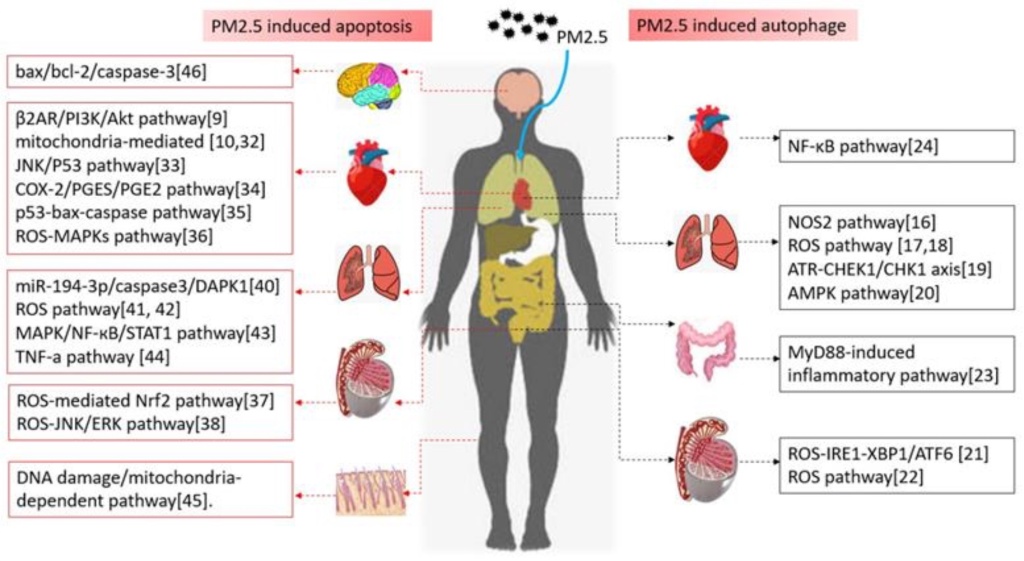
- Nitrogen Dioxide NO2 is a gaseous pollutant that has a red-brown color and a characteristic acidic, pungent smell. It is highly reactive and in the presence of sunlight and chemicals naturally released by plants it readily forms ground level Ozone, which is also a dangerous pollutant. NO2 comes mainly from energy production, industry and transport (especially from diesel engines). NO2 has more than doubled in our cities since 1990 because of the growth of diesel car sales, and is expected to grow more if no measures are taken. Breathing air with a high concentration of NO2 irritates and inflames airways in the human respiratory system and reduces lung function. Longer exposures to elevated concentrations of NO2 contribute to the development of asthma in children and adults and generally increases hospital admissions. It also affects the liver, spleen and blood. The concentration of NO2 in the air may not exceed an annual average of 40 μg/m3, according to the EU Air Quality Directive.

Description of the Air Quality along Agis’ daily tracks in Greece
- Day 1: Athens-Megara, 42,33km, 7:46 hours
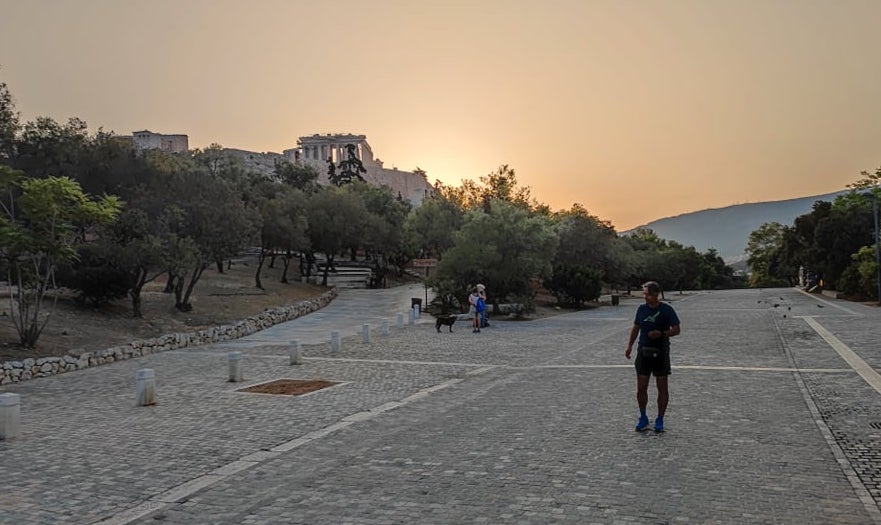
Here is the map with Agis’ course and running stats for Day 1:
And here are the screenshots of the Air Quality (AQ) data of the Flow AQ Monitor for PM2,5 (left) and NO2 (right):
The two graphs above show that Agis had to run under pretty polluted air conditions on Day 1. The main reasons: oil refineries, wildfires smoke and traffic pollution.
The PM2,5 average between the moment Agis started at the Acropolis at 7:48AM and when he finished in Megara at 15:30PM was 41,6 μg/m3. This is a level of Air Pollution four times higher than the safety level set by the WHO, and running under these conditions is not healthy. Best PM2,5 value was an excellent 2,41 μg/m3 and the worse was as high as 164 μg/m3.
NO2 was better, with an average of 19,6 μg/m3. Best value was 0 μg/m3 and worse was 97,8 μg/m3, which is more than twice as much the safety value of 40 μg/m3.
Short explanation of the Air Quality of Day 1:
- Agis started in Athens at 07:46 AM with high levels of PM2,5. These were high in the whole plain of Athens, with values steadily above 55 μg/m3 and peaks of around 100 μg/m3 (the average in the Athens area was around 63 μg/m3) – the big wildfires of Athens and Evia and the lack of wind were responsible for these high levels of Particulate in the air. The previous days the air was even more polluted in Athens. Only after KM 13,5, when Agis left the Athens area and crossed the Mt. Egaleo area, which forms a natural boundary of the Athens plain to the west, the PM2,5 got clearly better (average 10 μg/m3), but just for about 4 KM until he descended into the industrial area of Aspropyrgos and Elefsina. There, the very bad Air Quality originating from the oil refineries and industries is also clearly visible in the graph above. The PM2,5 average in the industrial area of Aspropyrgos and Elefsina was of 79 μg/m3, with peaks of 164 μg/m3. This Air is very unhealthy, and Agis had to breathe it for 14 KM! Then, once he left the industrial area behind, the air finally got to healthy levels, definitely better suitable for outdoor exercise. The PM2,5 average for the last 11 KM was at around 9 μg/m3, which is within the WHO safety levels.
- NO2 Pollution was definitely lower than PM2,5 pollution. It was relatively high in Athens centre, and as soon as Agis moved away from the center it went to low, safe levels until around KM37. There for some reasons that I can not be sure of, it suddenly got high again until the end of Agis run. Could it be because the Megara area has many animal farms? It can also be because NO2 travels far from its source thanks to the winds, and maybe the winds that picked up during the day blew it there from the Athens area in the afternoon?
Day 1 Air Quality stats:
| Low Pollution | High Pollution | Average Pollution | Total | |
| PM2,5 (μg/m3) | 2,4 | 164 | 41,6 | |
| NO2 (μg/m3) | 0 | 97,8 | 19,6 | |
| KM run | 15 | 27,3 | 42,3 | |
| Running time | 03:30 | 04:16 | 07:46 |
- Day 2: Megara-Korynthos, 44,3km, 6:55 hours
Here is the map with Agis’ course and running stats for Day 2:
And here are the screenshots of the Air Quality (AQ) data of his AQ Monitor for PM2,5 (left) and NO2 (right) for Day 2:
The two graphs above show that Agis had to run under polluted air conditions also during Day 2. The main reason: oil refineries and traffic pollution.
The PM2,5 average between the moment he started in Megara at 8:17AM and when he finished in Korynthos at 15:12PM was 50,4 μg/m3, even higher than the previous day. This is a level of Air Pollution five times higher than the safety level set by the WHO, and running under these conditions is really not healthy. Best PM2,5 value was an excellent 1,73 μg/m3 and the worse was as high as 142,8 μg/m3.
NO2 pollution was moderate to bad, much worse than the previous day, with an average of 35,7 μg/m3. Best value was 0 μg/m3 and worse was 159,8 μg/m3, which is four times higher than the safety value of 40 μg/m3, way too much.
Short explanation of the Air Quality of Day 2:
- Agis started in Megara at 08:17 AM with high levels of PM2,5. These were medium high in Megara and all along the way westwards to the next villages, with a tendency on the increase for the first 30 KM. The wildfire smoke could still be one reason for these high PM2,5 values, but surely the main reason was that the area lies immediately downwind from another big oil refinery that Agis met at KM30. Here, PM2,5 values reached peaks of 142,8 μg/m3 with an average of 83 μg/m3, actually very similar to those that Agis met the previous day in Aspropyrgos/Elefsina. Agis could smell the bad air released by the refinery and made the word pun in the video above “dilistiriasi”, coming from the words “dilistirio” – refinery and “dilitiriasi” – poisoning… Imagine how bad must be living in these refinery areas for the lungs and general health of its inhabitants! Once Agis finally passed the refinery area, the Air Quality got quickly better, and once he crossed the Corinth canal into the Peloponnese it got to very clean levels (around 6 μg/m3).
- NO2 Pollution was initially very high for the first 15 Kms, with a very high peak of 159,8 μg/m3 and an average of 113,4 μg/m3. Again, I can’t really explain the reason. Then, from KM15 until the end in Korynthos, the NO2 levels dropped to very low levels, with an average of only 3,3 μg/m3. The overall NO2 average along the 44,3 km run by Agis on the second day was 35,74 μg/m3, almost double compared to Day 1.
Day 2 Air Quality stats:
| Low Pollution | High Pollution | Average Pollution | Total | |
| PM2,5 (μg/m3) | 1,7 | 142,8 | 50,4 | |
| NO2 (μg/m3) | 0 | 159,8 | 35,7 | |
| KM run | 6 | 38,3 | 44,3 | |
| Running time | 02:00 | 04:55 | 06:55 |
- Day 3: Korynthos-Xilokastro, 34,3km, 5:04 hours

Here is the map with Agis’ course and running stats for Day 3:
And here are the screenshots of the Air Quality (AQ) data of his AQ Monitor for PM2,5 (left) and NO2 (right) for Day 3:
The two graphs above show that Agis had to run under pretty polluted air conditions also during Day 3. The main reason: Traffic pollution.
The PM2,5 average between the moment Agis started in Korynthos at 11:47AM and when he finished in Xilokastro at 16:51PM was 38,5 μg/m3, lower than the previous day. Again, this is a level of Air Pollution almost four times higher than the safety level set by the WHO, and running under these conditions has not been healthy for Agis also in the third day. Best PM2,5 value was an excellent 3,23 μg/m3 and the worse was as high as 119,1 μg/m3.
NO2 pollution was moderate to bad, much worse than the previous day, with an average of 45 μg/m3. Best value was 0 μg/m3 and worse was 135,4 μg/m3, which is more than three times higher than the safety value of 40 μg/m3.
Short explanation of the Air Quality of Day 3:
- Agis started in Korynthos at 09:16 AM with high levels of PM2,5. These are the classic levels of pollution that we can more or less see everywhere in Greek cities and larger villages during the summer, and they are mostly due to vehicle traffic. In fact, a large number of cars, trucks and motorcycles in Greece is over 10-15 years old, and, especially in the country, it is even older because farmers still use the classic diesel Toyota and Mitsubishi pick-ups that they were finally able to afford to buy in the mid 90’s. As such, a very large number of cars and most trucks have no catalytic converter, and you can imagine how big polluters they are. These produce high amounts of PM2,5 and PM10, as well as of NO2, from the very inefficient combustion they make. No other country in the EU has such an old fleet of vehicles that still pollute this much the air of the country.
* Around KM12 to KM20 Agis run on smaller roads with a poor surface, and also entered a region with a small wetland and reedbeds with dirt roads. We can see that PM2,5 (and also PM10, but we don’t consider it in this report) rose to alarming levels during this tract. Yet, this high levels of particulate can’t be considered pollution because they are just made of natural dust and are not made of the toxic chemicals from the combustion of hydrocarbons or biomass. Therefore, in the stats table below we don’t account these KM as High Pollution but as Low Pollution.
- NO2 Pollution followed more or less the PM2,5 pollution. It was high for around the first 4km near the city of Korynthos, with a peak of 135,6 μg/m3 and an average of 110,4 μg/m3, then it dropped to low levels until KM12. It then raised again from KM12 to KM20 to an average of 72,8 μg/m3 and finally dropped to low levels from KM21 onwards. Once again I can’t explain the high levels of NO2 between KM12 and KM20 in a region with low car traffic if not by thinking that NO2 is being blown there by the wind.
Day 3 Air Quality stats:
| Low Pollution | High Pollution | Average Pollution | Total | |
| PM2,5 (μg/m3) | 3,2 | 119,1 | 17 (38,5)* | |
| NO2 (μg/m3) | 0 | 135,4 | 45 | |
| KM run | 30,3* | 4* | 34,3 | |
| Running time | 04:30* | 00:34* | 05:04 |
- Day 4: Xilokastro-Egio 61km, 10:37 hours
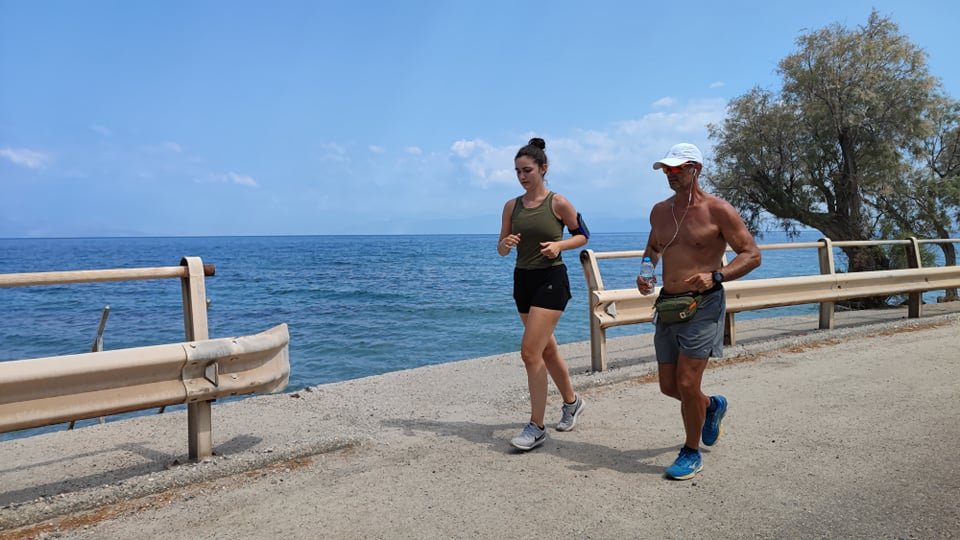
Here are the maps with Agis’ course and running stats for Day 4, with a 2h stop at Diakopto:
And here are the screenshots of the Air Quality (AQ) data of his AQ Monitor for PM2,5 (left) and NO2 (right) for Day 4. From this day on we can also see the levels of pollution with different colors on the maps. Green corresponds to the best AQ, then next levels are yellow, orange, red and purple. Purple is the worst.
The two graphs above show that Agis could finally enjoy clean air conditions during Day 4. The main reason: no industries, low traffic, smaller villages, wooded mountain slopes reaching the sea coast
Fortunately, on Day 4 the PM2,5 average between the moment Agis started in Xilokastro at 08:13AM and when he finished in Egio at 20:58PM was as low as 11,7 μg/m3, way lower than the previous days and close to the WHO safety levels. Running under these conditions can be considered healthy, luckily for Agis. Best PM2,5 value was 1,84 μg/m3 and the worse was as high as 137,1 μg/m3. We must point out that these high values were measured only two times during this day (whereas during the previous days values above 100 μg/m3 were met many many times more), and they could very likely be due just to the passing of a very polluting truck.
NO2 pollution was low as well, much better than the previous day, with an average of 22,2 μg/m3. Best value was 0 μg/m3 and worse was 101,5 μg/m3. Like with PM2,5, this high value was met only once during this day, contrarily to the previous days.
Short explanation of the Air Quality of Day 4:
- Agis started in Xilokastro at 08:13 AM with low levels of PM2,5, just slightly above the WHO safety levels. These are the levels of Air Pollution that we expect in the countryside during summer, where villages are small and sparse, and vehicle traffic is low. The N coast of the Peloponnese is a highly forested area with steep mountain slopes that almost reach the sea, and surely these create a microclimate with local winds that maintain the AQ at very satisfactory levels. After around KM18 the AQ got even better and went below 10 μg/m3, within the WHO safety limits. The better Air to run in for Agis! Only from KM30 to KM32 in the area of the little town of Akrata the AQ worsened to the more unhealthy levels of around 70 μg/m3, very likely due to increased traffic. Then from KM32 Agis enjoyed great air once again until the end in Egio.
- NO2 Pollution followed more or less the PM2,5 pollution also in Day 4. It was low for the first 30km and then it increased along with PM2,5 by the town of Akrata (peak of 63,9 μg/m3 and average of 48,5 μg/m3 between KM30 and KM44), then it dropped to low levels again until the end in Egio.
Day 4 Air Quality stats:
| Low Pollution | High Pollution | Average Pollution | Total | |
| PM2,5 (μg/m3) | 1,8 | 137,1 | 11,7 | |
| NO2 (μg/m3) | 0 | 101,5 | 22,2 | |
| KM run | 59 | 2 | 61 | |
| Running time | 10:07 | 00:30 | 10:37 |
- Day 5: Egio-Patras 35km, 04:57 hours
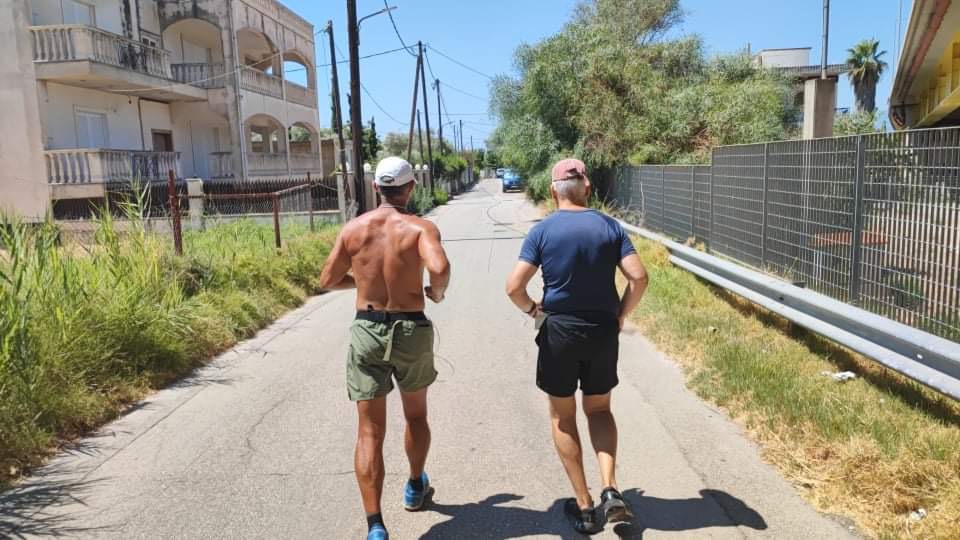
Here is the map with Agis’ course and running stats for Day 5:
And here are the screenshots of the Air Quality (AQ) data of his AQ Monitor for PM2,5 (left) and NO2 (right) for Day 5:
The two graphs above show that Agis could enjoy clean air conditions also during his run on Day 5 . The main reason is the same as for Day 4: no industries, low traffic and fewer villages, wooded mountain slopes reaching the sea coast
On Day 5 the PM2,5 average between the moment Agis started in Egio at 08:48AM and when he finished in Patras at 13:45PM was as low as 8,8 μg/m3, within the WHO safety levels. Another day spent running under healthy conditions! Best PM2,5 value was 1,67 μg/m3 and the worse was 29,3 μg/m3, way better than during the first three days.
NO2 pollution was low as well, with an average of 25,4 μg/m3. Best value was 0 μg/m3 and worse was 97,8 μg/m3.
Short explanation of the Air Quality of Day 5:
- Agis started in Xilokastro at 08:13 AM with low levels of PM2,5, just slightly above the WHO safety levels. These are the levels of Air Pollution that we expect in the countryside during summer, where villages are small and sparse, and vehicle traffic is low. The N coast of the Peloponnese is a highly forested area with steep mountain slopes that almost reach the sea, and surely these create a microclimate with local winds that maintain the AQ at very satisfactory levels. After around KM18 the AQ got even better and went below 10 μg/m3, within the WHO safety limits. The better Air to run in for Agis! Only from KM30 to KM32 in the area of the little town of Akrata the AQ worsened to the more unhealthy levels of around 70 μg/m3, very likely due to increased traffic. Then from KM32 Agis enjoyed great air once again until the end in Egio.
- NO2 Pollution followed more or less the PM2,5 pollution also in Day 5. It was low for the first 30km and then it increased along with PM2,5 by the town of Akrata (peak of 63,9 μg/m3 and average of 48,5 μg/m3 between KM30 and KM44), then it dropped to low levels again until the end in Egio.
Day 5 Air Quality stats:
| Low Pollution | High Pollution | Average Pollution | Total | |
| PM2,5 (μg/m3) | 1,7 | 29,3 | 8,8 | |
| NO2 (μg/m3) | 0 | 97,8 | 25,4 | |
| KM run | 35 | 0 | 35 | |
| Running time | 04:57 | 00:00 | 04:57 |
STATS totals for Agis’ run on Greek soil:
| Day 1 | Day 2 | Day 3 | Day 4 | Day 5 | 5 Days average | Total | |
| PM2,5 min (μg/m3) | 2,4 | 1,7 | 3,2 | 1,8 | 1,7 | 2,2 | |
| PM2,5 max (μg/m3) | 164 | 142,8 | 119,1 | 137,1 | 29,3 | 118,5 | |
| PM2,5 average (μg/m3) | 41,6 | 50,4 | 17 (38,5)* | 11,7 | 8,8 | 25,9 (30,2)* | |
| NO2 min (μg/m3) | 0 | 0 | 0 | 0 | 0 | 0 | |
| NO2 max (μg/m3) | 97,8 | 159,8 | 135,4 | 101,5 | 97,8 | 118,5 | |
| NO2 average (μg/m3) | 19,6 | 35,7 | 45 | 22,2 | 25,4 | 29,6 | |
| KM run low pollution | 15 | 6 | 30,3 | 59 | 35 | 145,3 | |
| KM run high pollution | 27,3 | 38,3 | 4 | 2 | 0 | 71,6 | |
| Run time low pollution | 03:30 | 02:00 | 04:30 | 10:07 | 04:57 | 25:04 | |
| Run time high pollution | 04:16 | 04:55 | 00:34 | 00:30 | 00:00 | 10:15 |
The summary table above shows that:
- Agis run for two thirds (145,3 KM) of the Athens-Patras stretch under conditions of low Air Pollution and for one third (71,6KM) under very high Air Pollution.
- The worse Air Quality was met in Athens and in the industrial zones all the way until Korynthos.
- Low Pollution was met from Korynthos until Patras, with AQ getting better and better the furthest away from the start.
Bottom line is that if you want to do outdoor exercise in Greece under healthy Air conditions within the WHO guidelines (PM2,5 below 10 μg/m3), you must make sure to stay away from the wider Athens area and even from smaller cities like Korynthos but also Megara, Akrata and most cities around the country, where industrial (where there is industry) and traffic pollution are very high. And when the cold season comes then there is no safe place to do outdoor exercise with clean air because of the extra burden to Air Pollution from the wood smoke from heaters and agriculture that make Air Quality in Greece one of the worst in Europe. If Agis made his 2421 Climate Run in winter we would see a big difference in the results (towards the worse) along the Greek stretch.
Greek authorities must do much more in order to bring the Air Pollution levels of our cities to those of other European cities, and even more in order to bring the to the WHO standards.

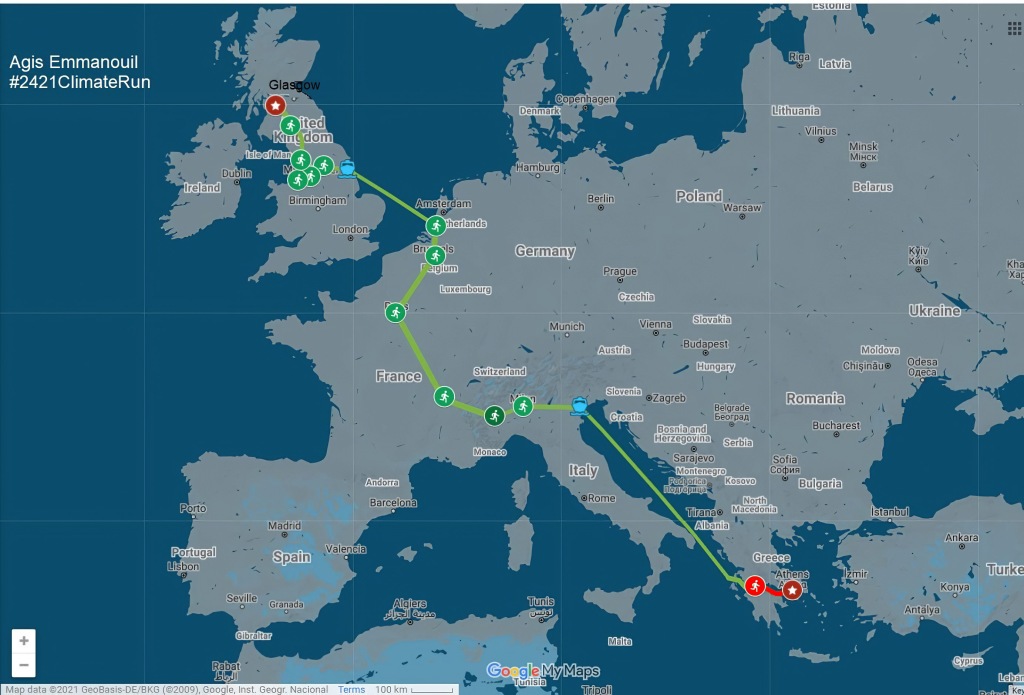

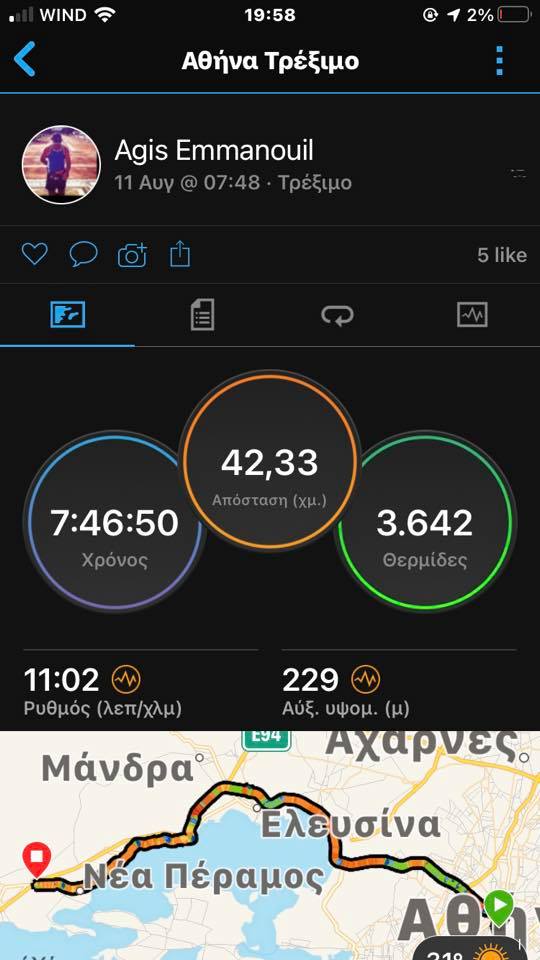

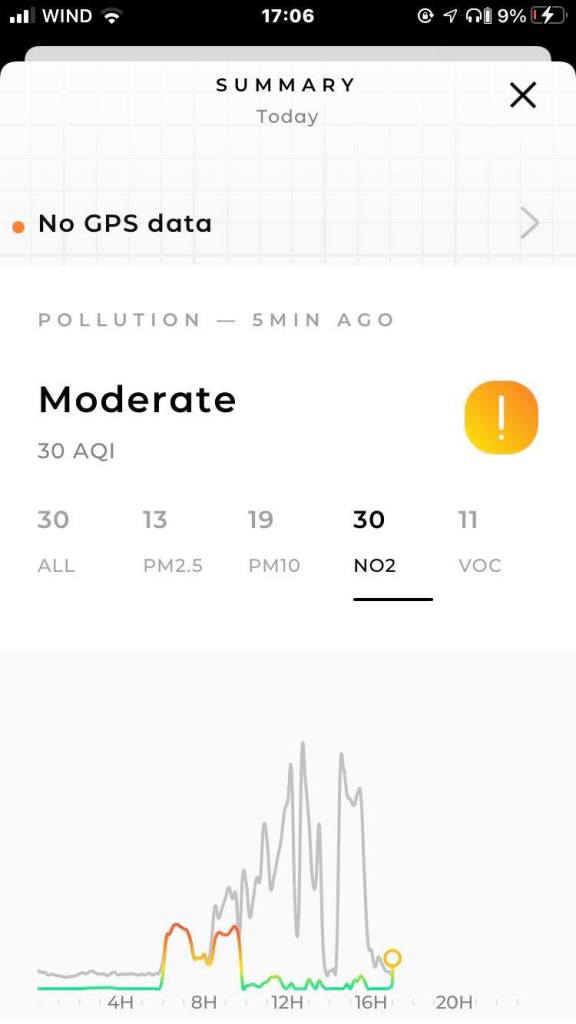
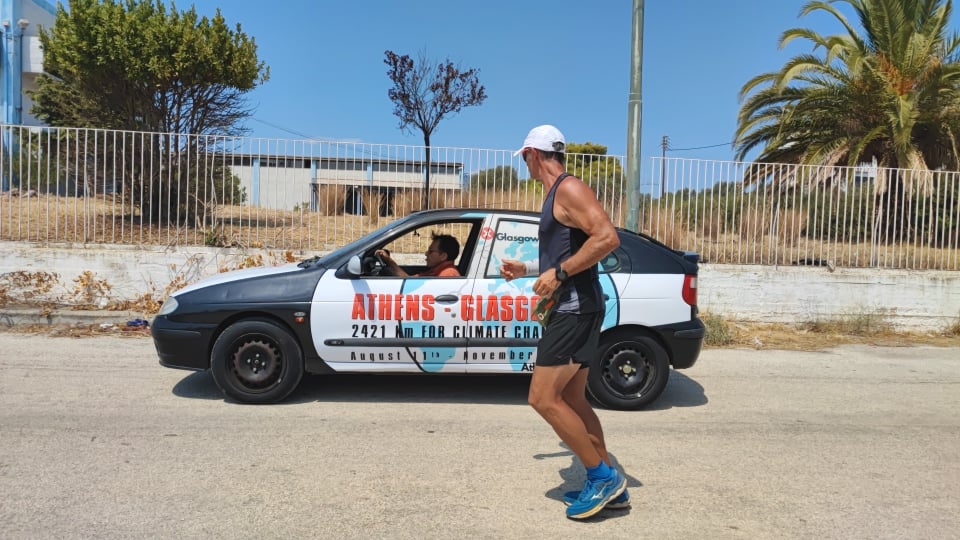

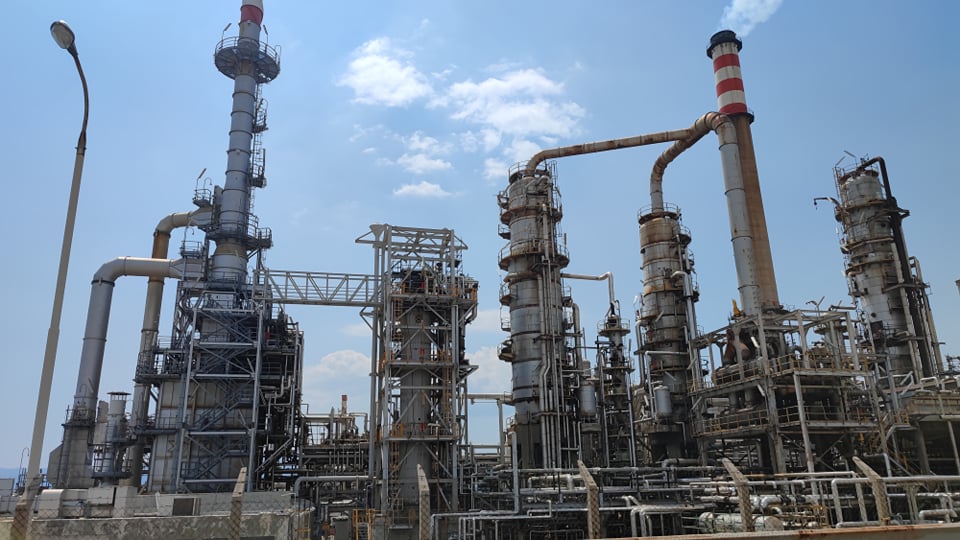
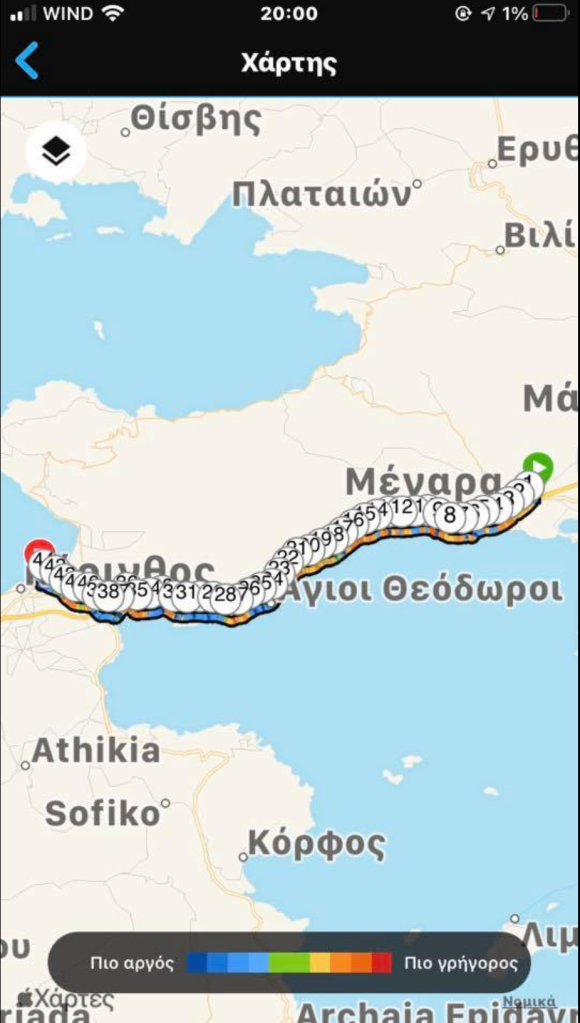
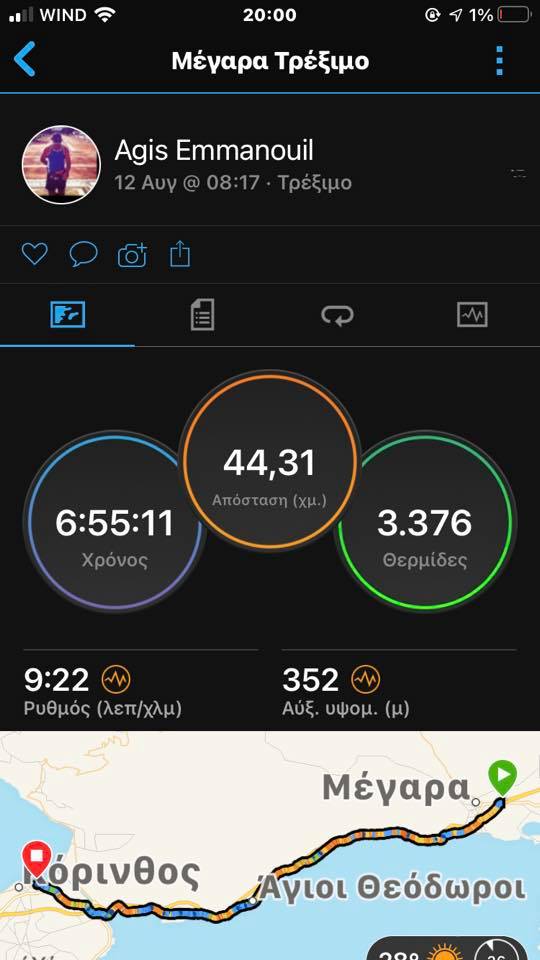
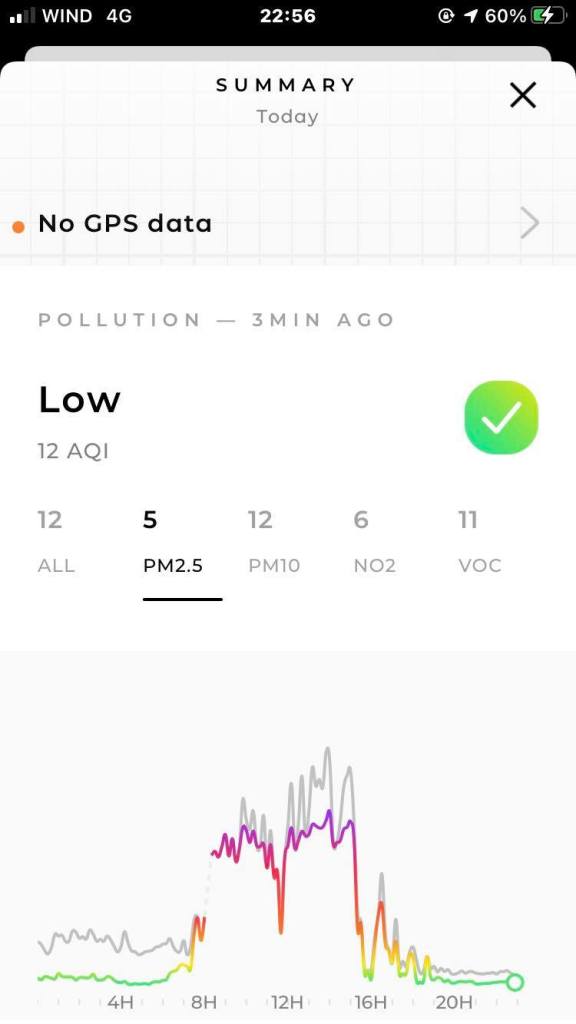
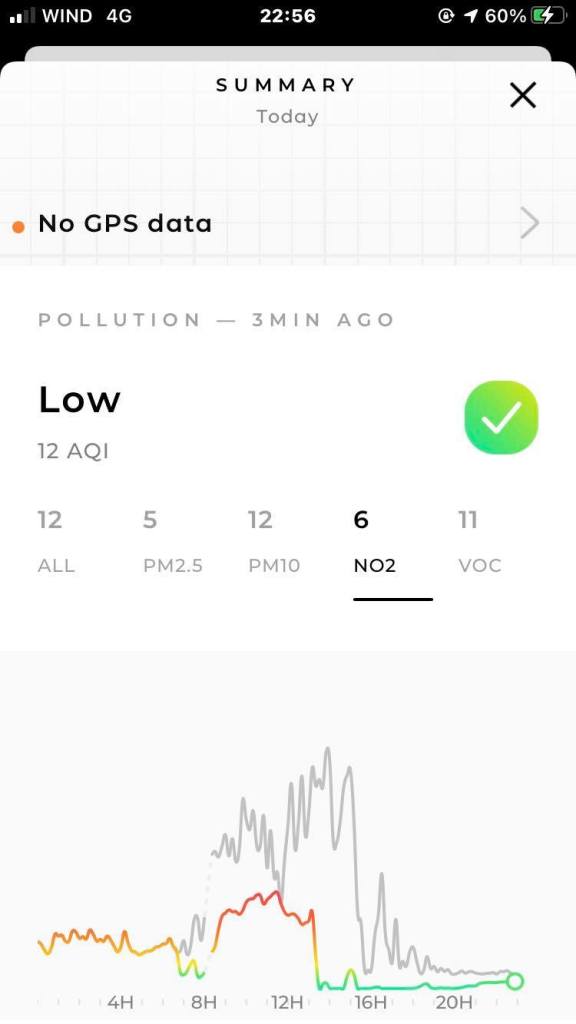

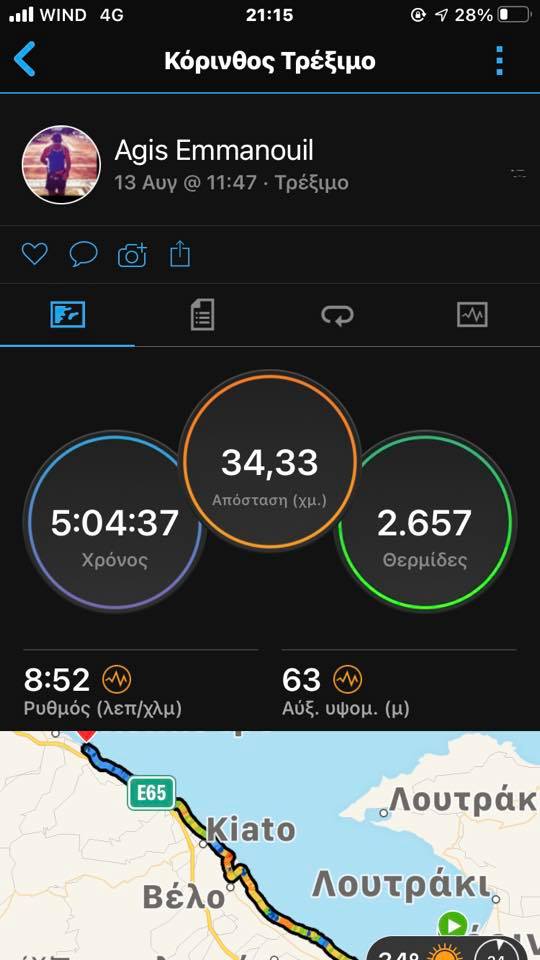
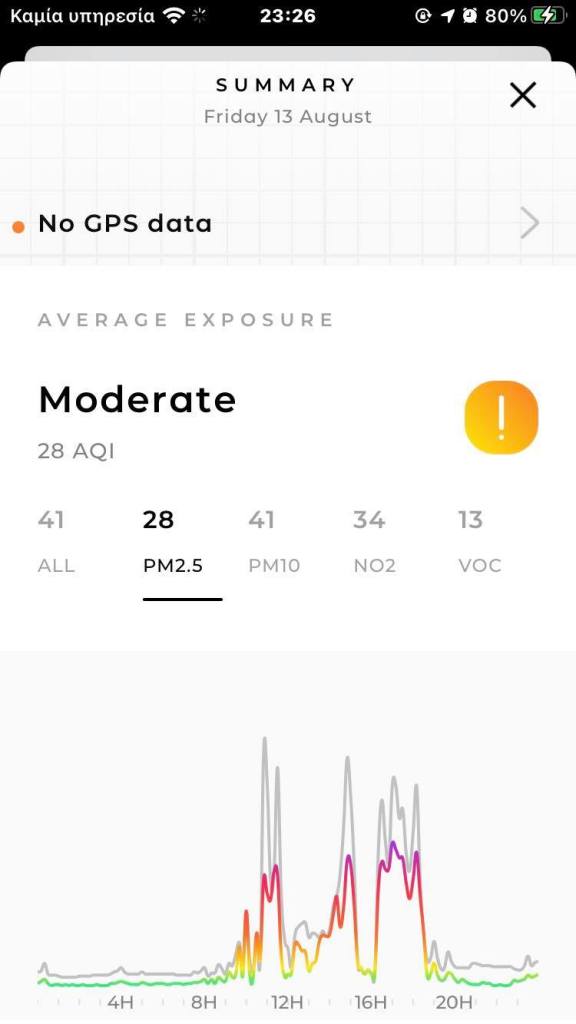
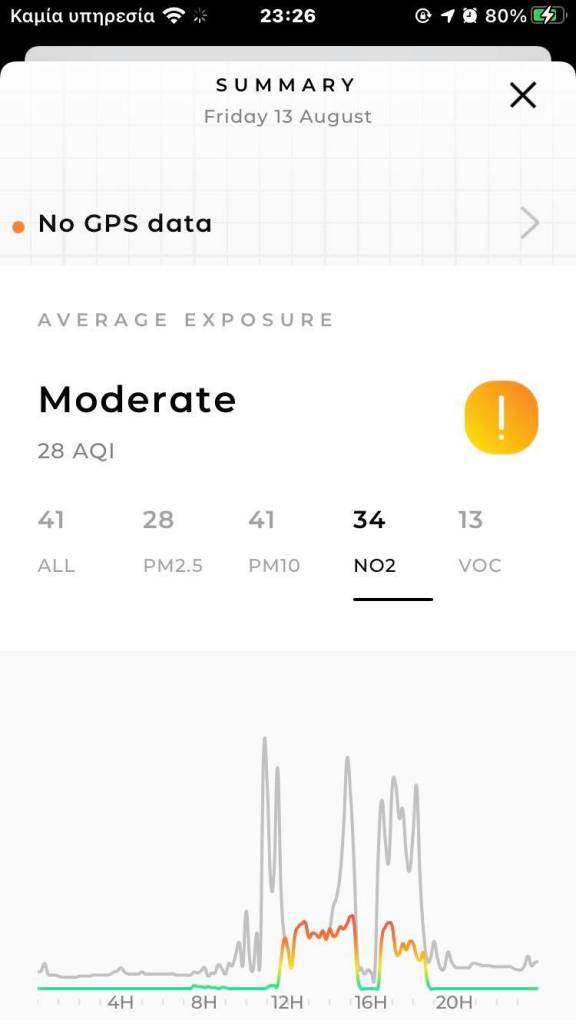
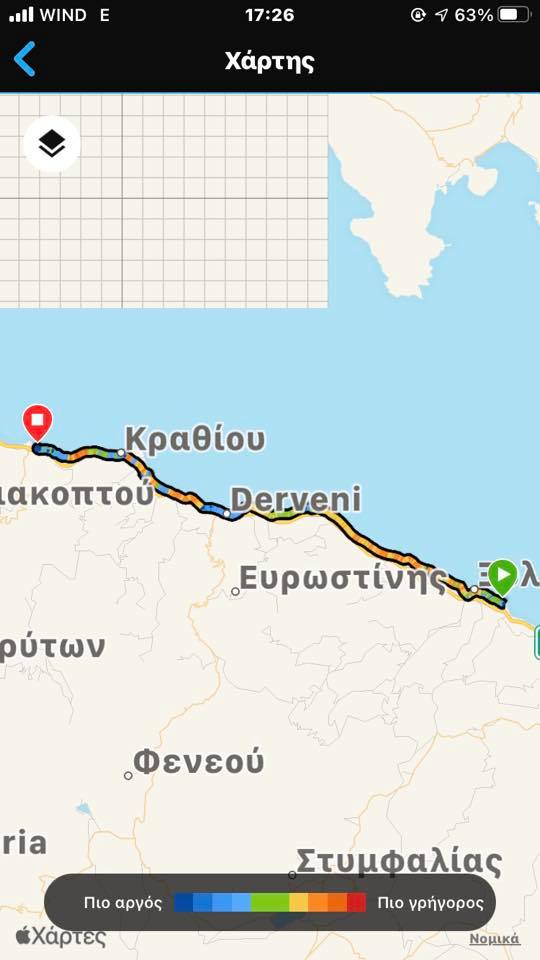
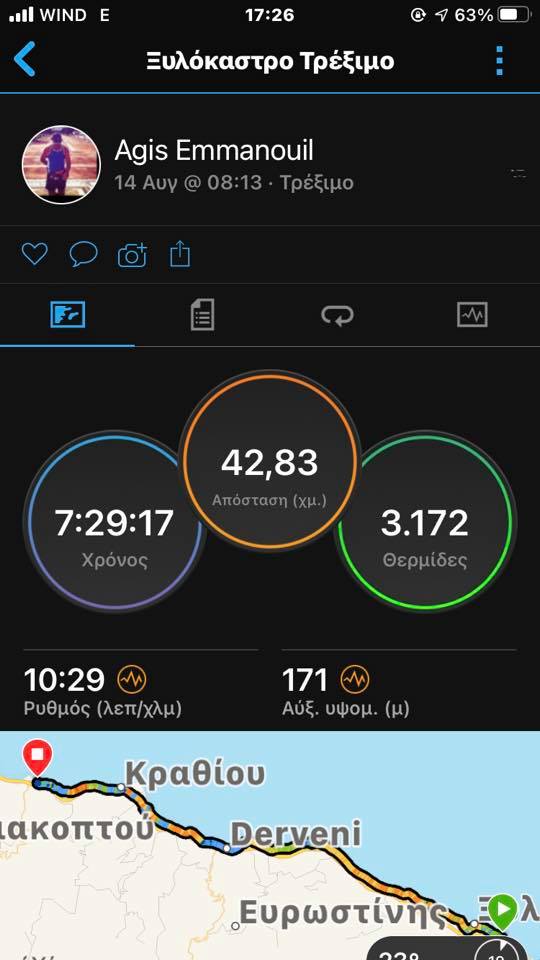
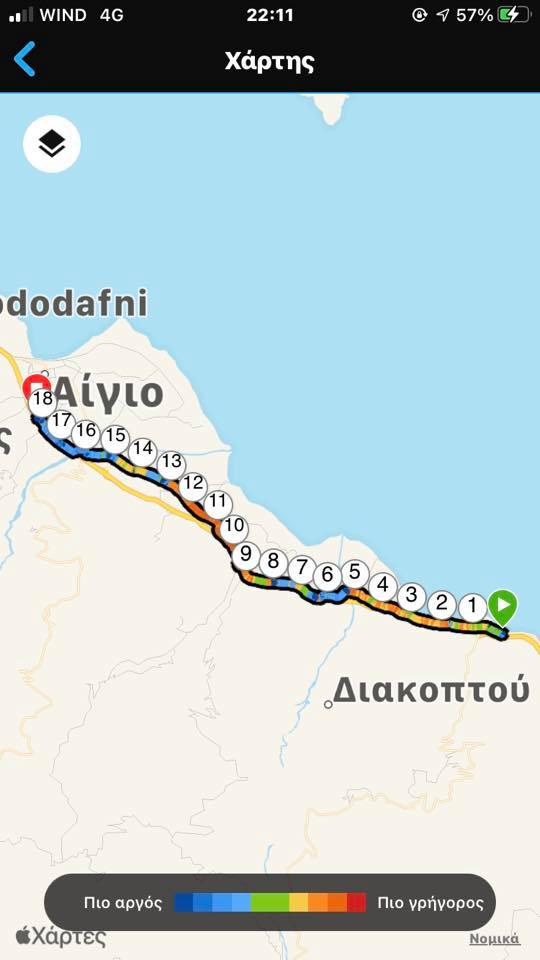

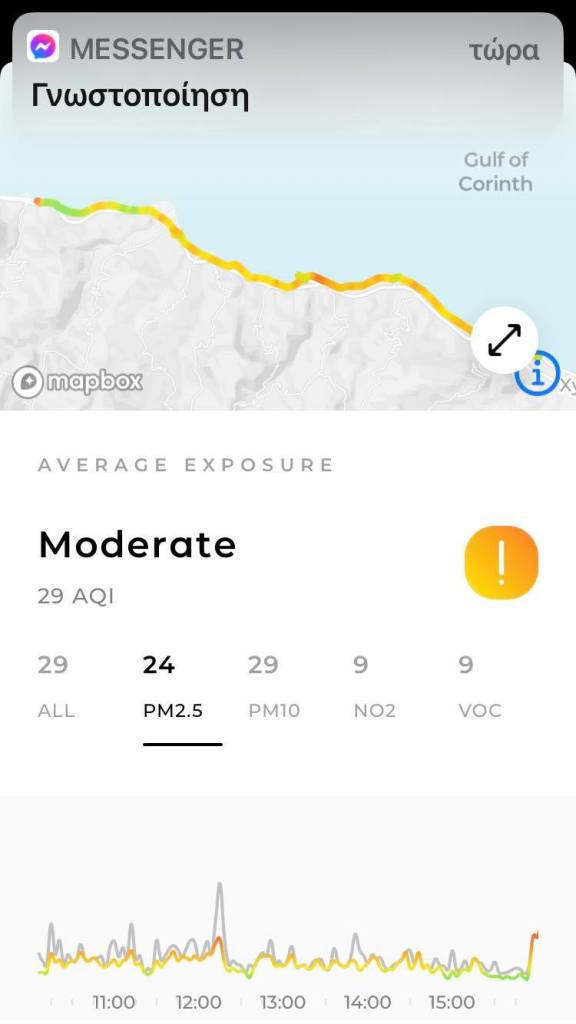
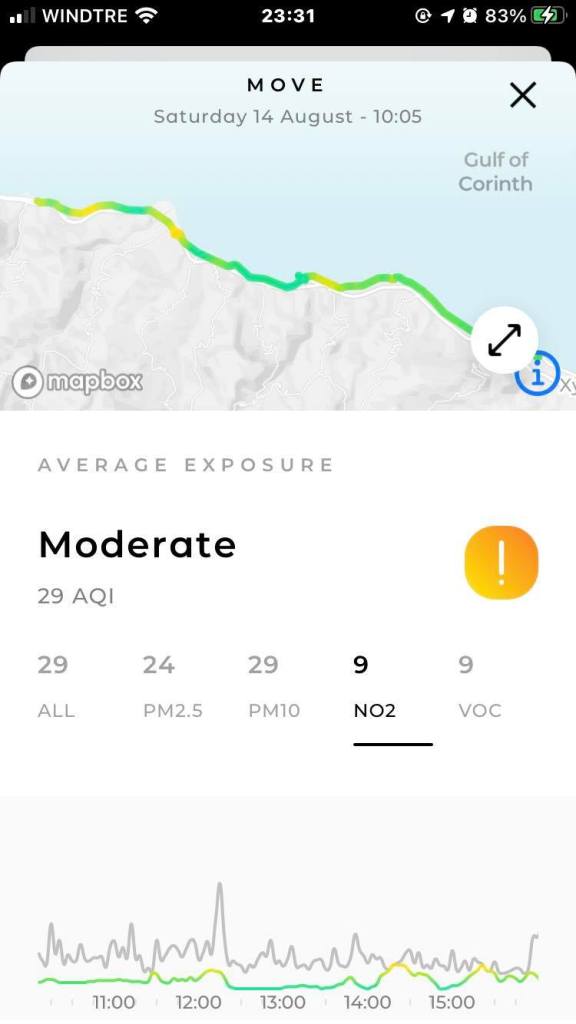

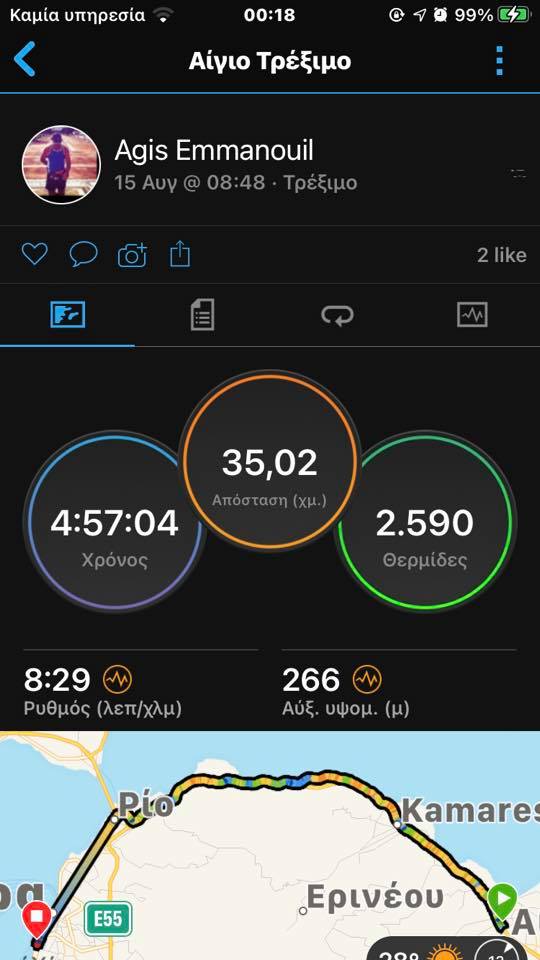
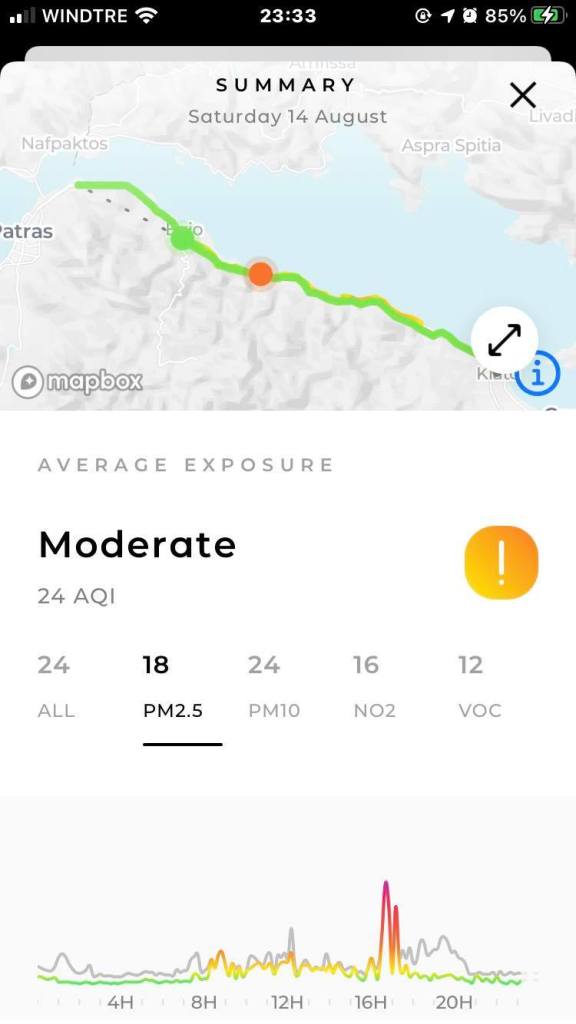
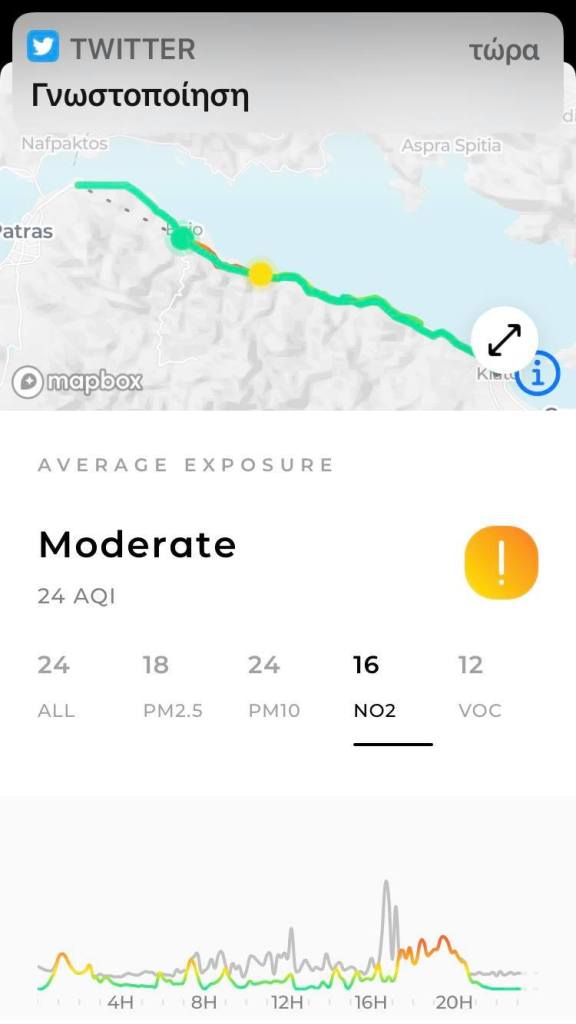
4 thoughts on “Daily Air Quality measurements along Agis Emmanouil’s 2421km Athens-Glasgow Climate Run. Part 1: GREECE”